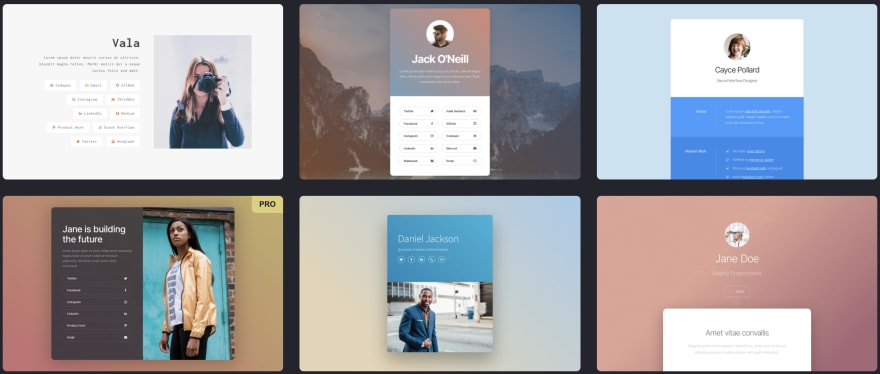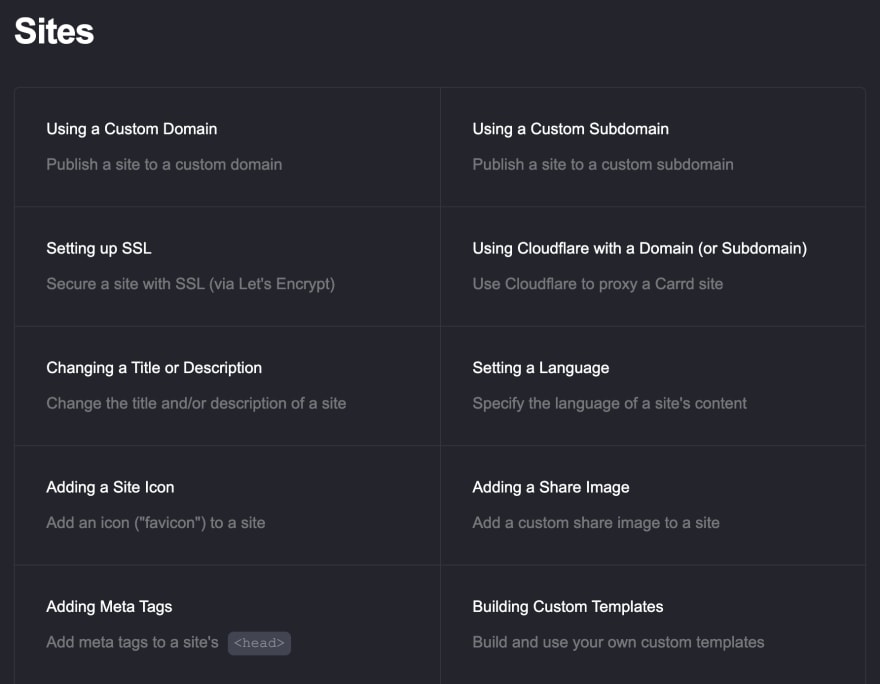What and why?
No-code is becoming a big part of modern product development, it encourages an agile approach and accelerates iterations. Understanding how a no-code tool is built can be an advantage for a developer.
In this article, I'm going to analyze Carrd.co, a service for building responsive one-page sites, break it down into components to briefly see how a similar product can be built.
The Output
First, let's look at what can be made using Carrd.
Personal sites
Landing pages
(See in details at carrd.co/build)
Essentially, the output you can get from Carrd is simple yet beautiful and responsive personal sites and landing pages.
Design Concept
Every no-code builder has a design concept, which is basically how its outputs are structured so that they can be built, serialized (saved to disk), and reproduced (rendered on screen).
For Carrd, there're 4 primary concepts:
- Site: deployment configuration of a site such as title, description, language, domain, SSL certificates, Google analytics, etc. In software engineering, Site is basically a configuration file for DevOps automation.
-
Background: each Site has a Background component, which sits behind all of a site's elements. When rendering on browsers, Background is technically a mapping to CSS
backgroundproperty of HTMLbody, which can be styled to show either a solid color, a gradient, an image, or a video.
-
Page: the container of all of a site's elements (except for Background). Page defines how a site's overall layout looks, how elements should be aligned to each other. A Page can also be styled and positioned to show like a card or a window. When rendering on browsers, Page is technically a top-level
div.
- Element: a widget on a Page such as Text, Image, Button, etc. Carrd has about 18 different types of elements. Each element has several properties that can be configured to change its behavior and look-and-feel. When rendering on browsers, each element is technically a mapping to a set of HTML elements and CSS styles.
Implementation Components
If you've experienced enough with a component-based front-end framework (React, Vue, etc), you may already recognize that Carrd is essentially a components library and a builder UI tailor-made for it.
Yeah, that's exactly it. However, to make it a full-blown product for non-developer users, we'll need a couple of other components. In a word, we'll need:
Components Library and Compiler: together define what elements are available for uses, how they are compiled into HTML/CSS/JS (or other presentations if you're building for platforms other than web).
Builder: a graphical user interface application that allows users to pull elements together visually, instead of writing code.
Serializer: a service that writes what users built visually with Builder into disks (database, text files, etc) and vice versa.
Publisher: a service that publishes a site's output along with its configurations to a hosting or distribution channel (Amazon S3, Vercel, etc).
Dashboard: the UI for managing one's account, sites, and stuff other than building.
Homepage: the website itself, including its logo, landing page, signup page, etc.
👉🏻 What's next?
I hope this article gives you an idea of how a no-code platform can be built. 🙏
If you like it, follow me on Twitter, where I write about open-source and coding tutorials, befriend, and discuss fun stuff together! 😉














Top comments (0)